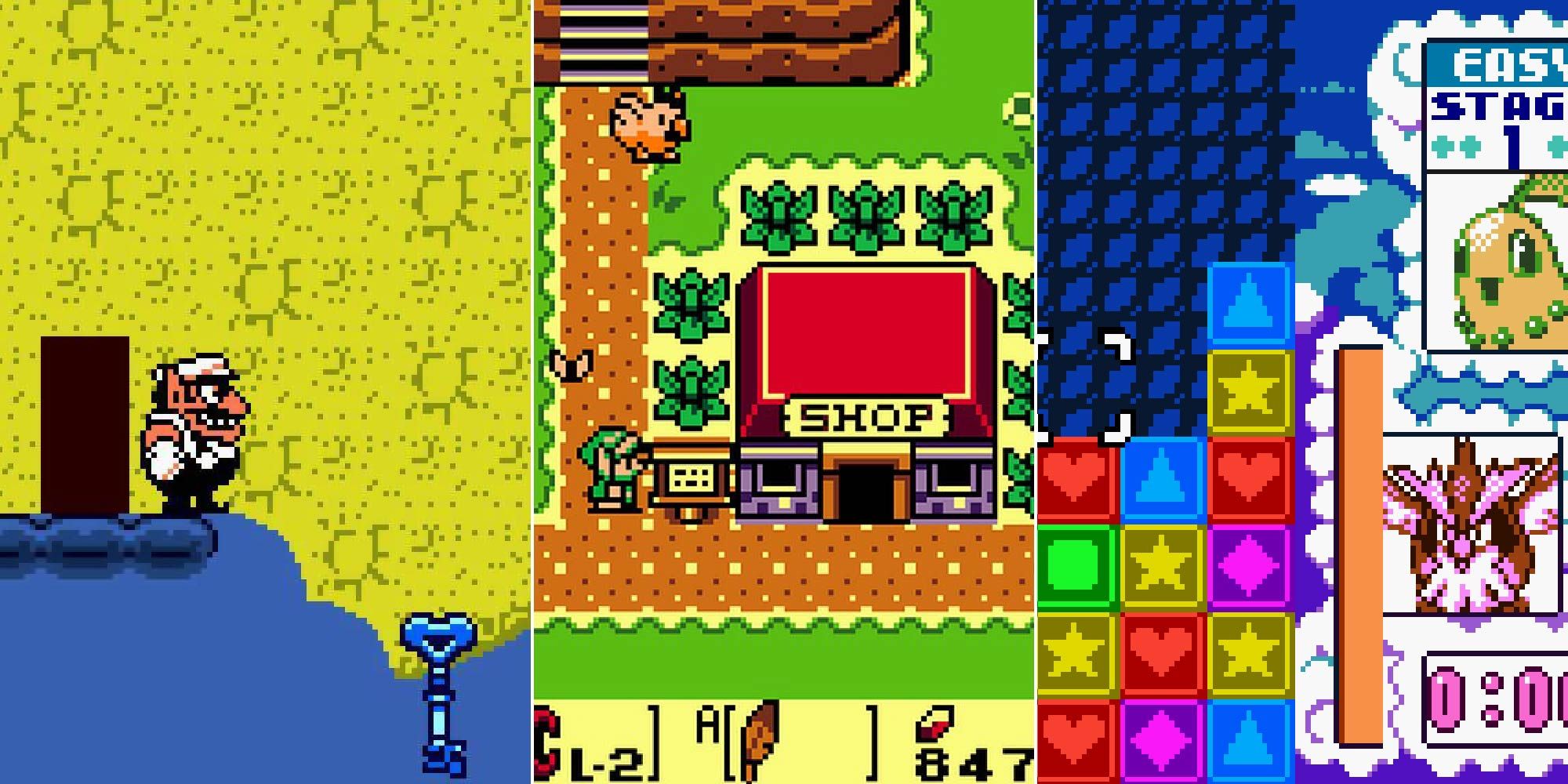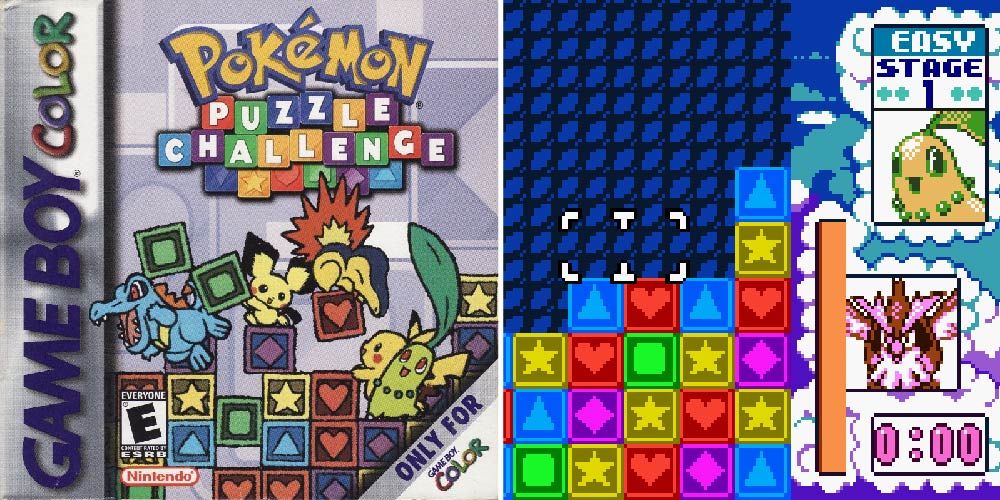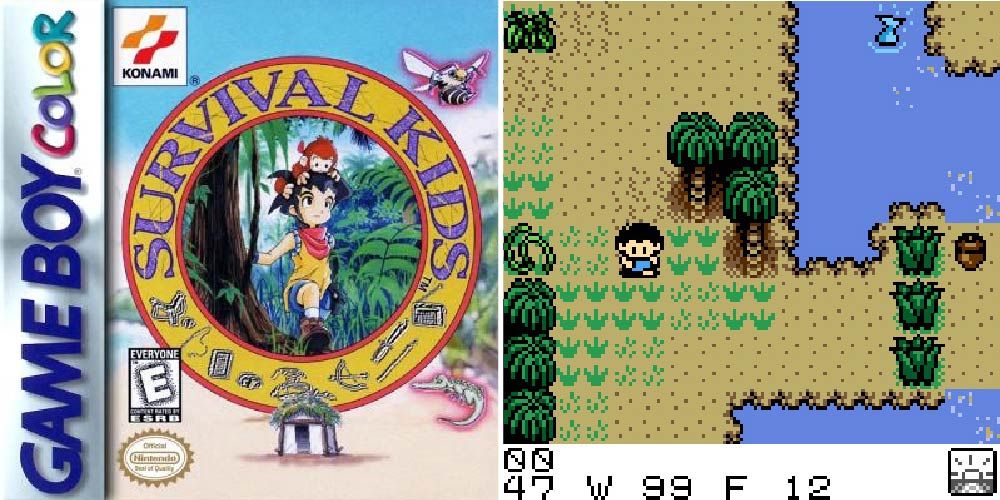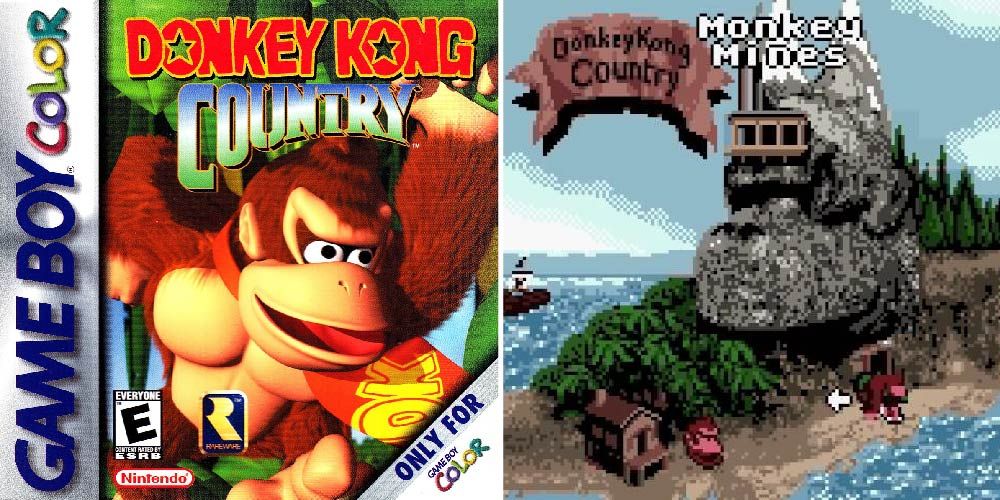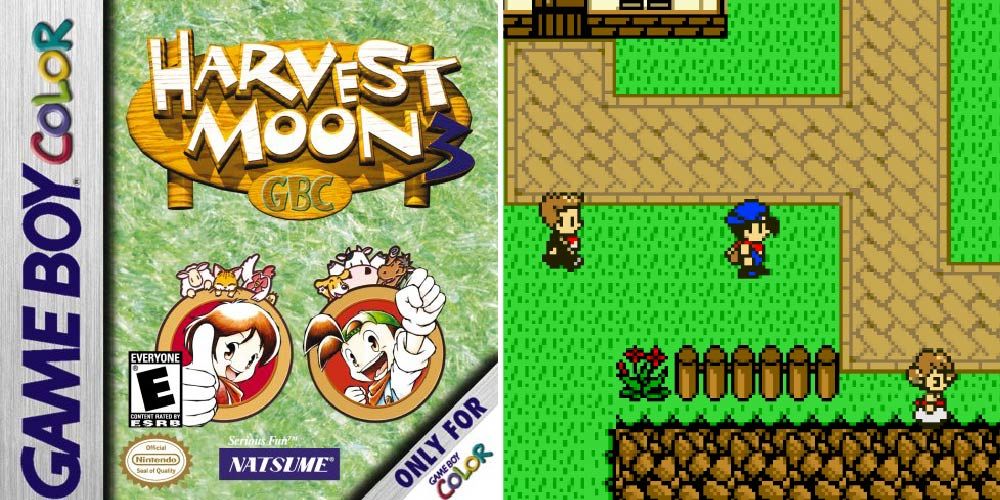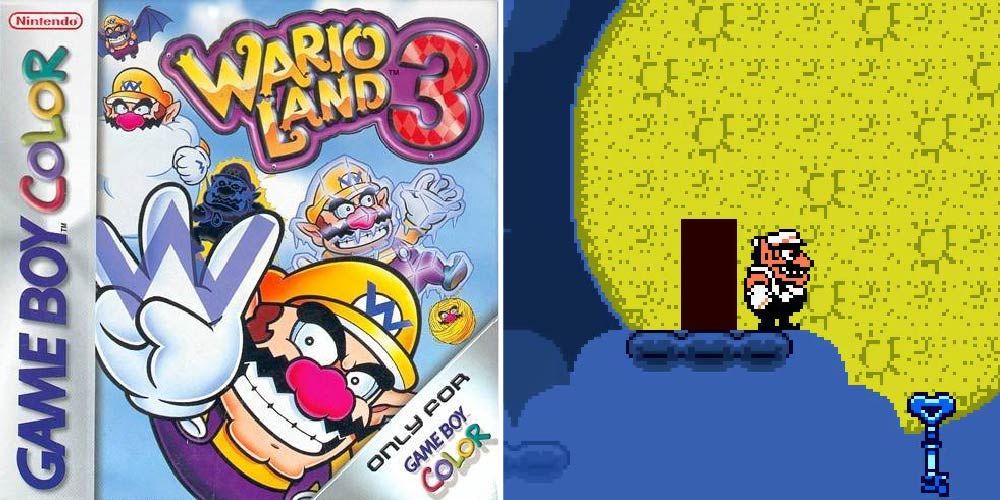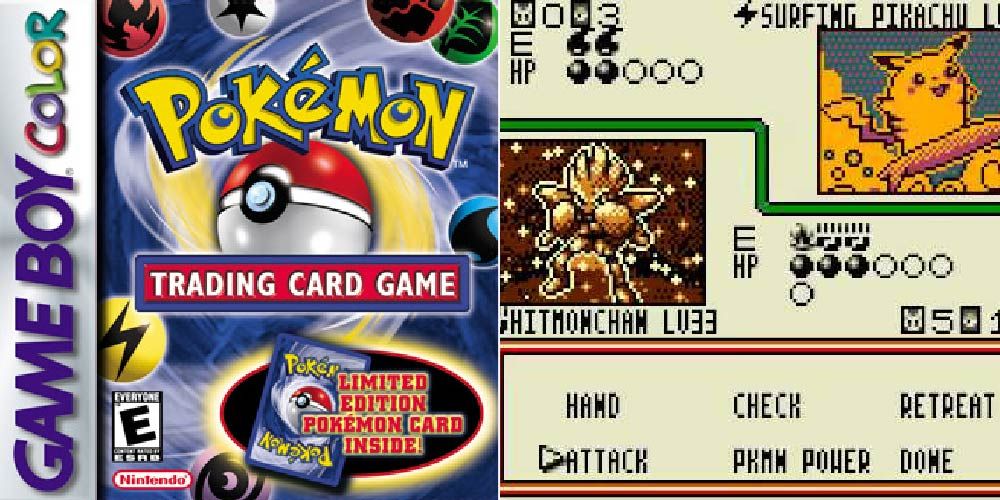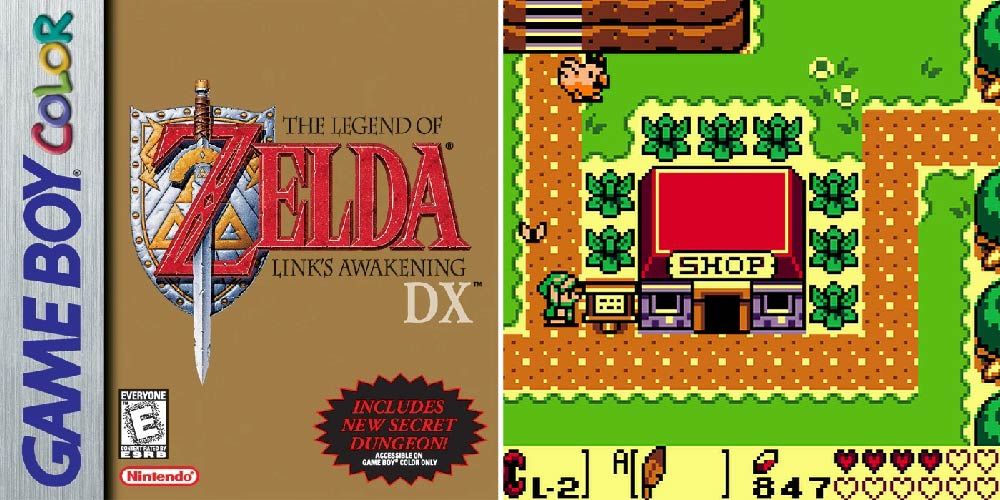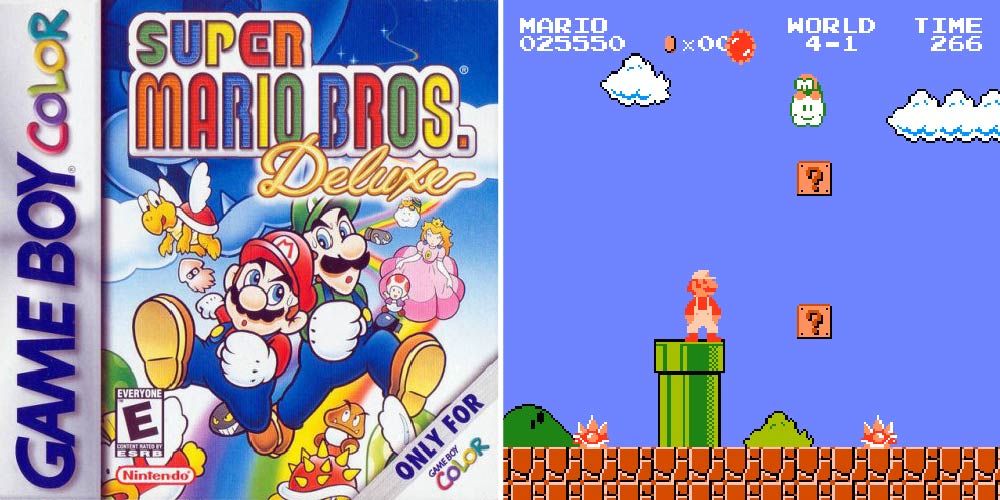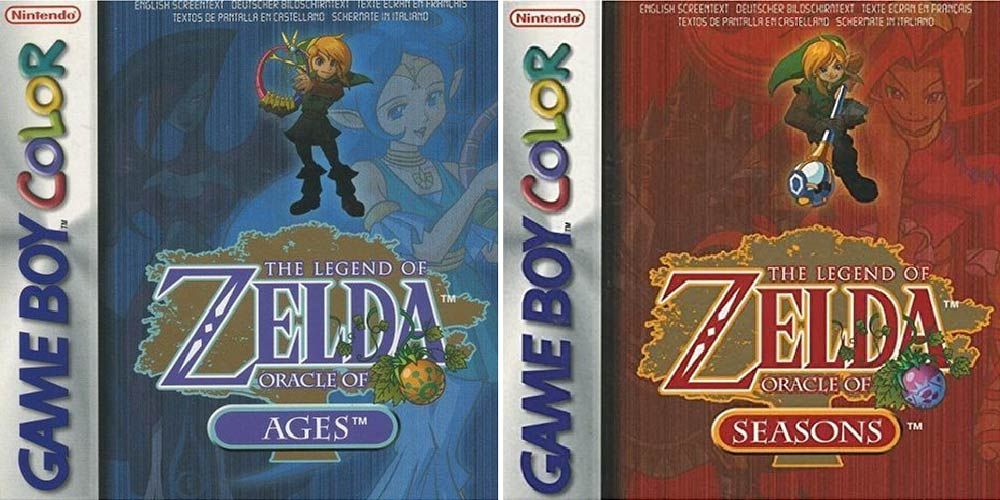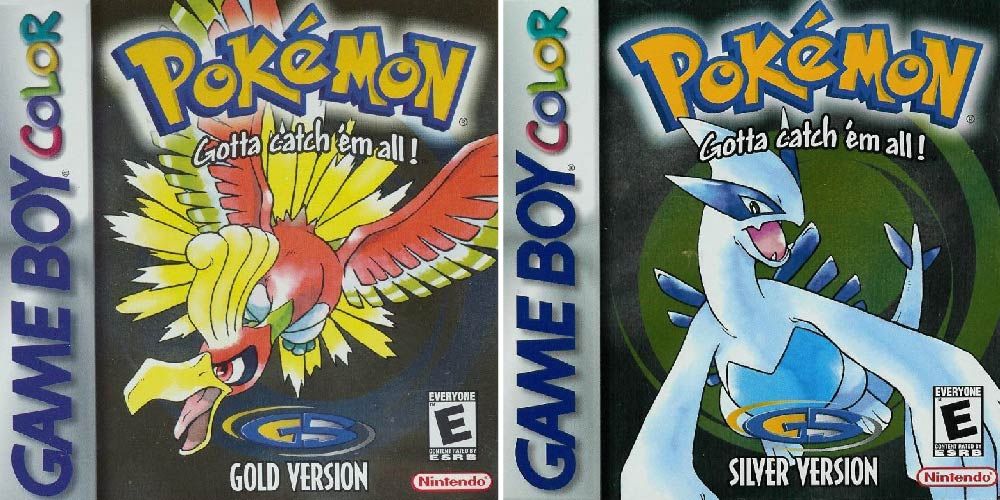The Gameboy Color was one of Nintendo's earliest forays into handheld gaming. For many of us, it was our first handheld game console, and it got dragged around absolutely everywhere. Granted, it was slightly annoying—impossible to play in low light, or with any sort of glare on the screen. Still, it's remembered fondly to this day.
To its credit, the GBC had an amazing lineup of games. Not only were its new games awesome in their own right, the machine was backwards compatible with nearly everything on the original Gameboy. This list is a look at Color originals — these are the best games ever released for Nintendo's classic handheld.
10 Pokémon Puzzle Challenge
At first glance, Pokémon Puzzle Challenge might seem like a cheap tie-in game. It's actually excellent, even for non-Pokémon fans. The story of the game puts the player through all eight gyms in the Johto region from Pokémon Gold, Silver, and Crystal. Players can even choose their partner, unlocking more Pokémon as they go. The experience is complete with charming graphics and jamming remixes of second-gen Pokémon music.
The gameplay is a simple match-three puzzle game, but it's well executed. Players match colors to "attack" their opponents. Watching your rival's HP go down adds a sense of satisfying progression. Clearing blocks is important, as they slowly scroll upward, making it feel a bit like Tetris.
9 Survival Kids
Survival Kids was a unique Konami game that really filled a niche for its genre on the Gameboy. Currently, we have lots of amazing survival games—Don't Starve, The Forest, even Minecraft. At the time, however, this game was one-of-a-kind.
For starters, Survival Kids is completely open-ended. That was pretty uncommon for Gameboy games outside, say, Harvest Moon. The game puts players on a deserted island with just one goal: survive. Players can explore and craft, and the game does have a story. Actually, it even has multiple endings—eight of them, some of which aren't so happy. The game was very remarkable for its time, and laid the way for Konami's similar DS series, Lost in Blue.
8 Donkey Kong Country
Who doesn't love Donkey Kong Country? It's Rare's classic platformer, scaled down to run on the Gameboy Color. Given the console's extreme limitations, this game is practically a technical marvel. No, it's not exactly the same experience as on the SNES. Still, it's arguably one of the most faithful GBC ports in existence.
Most of the ported levels are slightly reworked, but still hold true to the feel of the levels in the original game. The sound effects, while digitized, still sound excellent. The music is great, as it always is in Rare's old games. Unfortunately, the pseudo-3D graphics have aged very poorly, especially compared to their SNES counterparts.
7 Harvest Moon 3
Harvest Moon, also known as Story of Seasons, is Natsume's classic farm sim game. The gameplay is just what one would expect. It's the same top-down farming gameplay that games like Stardew Valley still emulate to this day. Harvest Moon 3 is possibly the most refined version of the game on the Gameboy Color.
Harvest Moon 3 was notable for introducing new mechanics to the series, including teamwork with a second farmer, as well as NPC marriage. Unfortunately, some more advanced features are missing, meaning HM3 hasn't aged particularly well. It has a hard time keeping up with its modern competition.
6 Wario Land 3
Players who enjoyed the classic Wario Land games on the Gameboy will likely love Wario Land 3. It's a great sequel that maintains the look and gameplay of the original games while also expanding on them.
Wario Land is a somewhat slower platformer than Super Mario. It's also a bit more gimmicky, but not in a bad way. In Wario Land 3, Wario takes on various forms after getting hit by enemies, and uses them to traverse levels. For example, one enemy will turn him into a fireball, letting him burn his way through obstacles. The unique, varied gameplay is complimented by some awesome animations and sprite work.
5 Pokémon Trading Card Game
The Pokémon trading card game is infamous for never actually being played. There are tons of collectors out there, many of whom have never played a single round of the game. Players like these can really benefit from video game ports to teach them the ropes, and for whatever reason, this Gameboy Color game is the only one.
This port of the TCG is surpringly fully featured, with good-looking cards that faithfully recreate their physical counterparts. However, since it is an old game, players are stuck with the classic first run of the trading cards. Despite that, for those who enjoy the card game, this is a great way to learn it.
4 The Legend of Zelda: Link's Awakening DX
Nintendo has a habit of co-opting other games into existing franchises. Doki Doki Panic became Super Mario Bros. 2. Dinosaur Planet became Star Fox Adventures. And, of course, Link's Awakening was never originally intended to be a Zelda game, which is why it's so bizarre. Princess Zelda is not in the game, nor is the triforce, but it does have chain chomps, goombas, and Kirby in it for whatever reason.
Despite the obvious weirdness, Link's Awakening has amazing gameplay on par with A Link to the Past. Koholint Island may be the strangest place in the entire Legend of Zelda series, but hey, maybe that's a selling point.
3 Super Mario Bros. Deluxe
While it may be a rehash of Super Mario Bros. 1, Deluxe is a classic mainstay of the Gameboy Color, with touched-up graphics and a bunch of unlockable features. In addition to the main game, players can unlock the original Super Mario Bros. 2 (aka "The Lost Levels"). The success of Deluxe allowed games like Super Mario World to make their way onto the Gameboy Advance, bringing them to a new generation of young gamers.
Deluxe also came with multiplayer modes, including a new one where players would race against each other to complete levels. It even had some miscellaneous mini-games, which became a thing in later Mario re-releases as well. Most notable of these is the re-release of Mario 64 on the DS, which has a ton of silly mini-games. One of them is a spiritual successor to the fortune-teller game from Super Mario Bros. Deluxe.
2 The Legend of Zelda: Oracle of Ages/Seasons
It almost feels wrong to group these two games together, because they're very different, but it's tough to talk about one without bringing up the other. They both came out at the same time, and both are worth playing today.
For those who don't know, Oracle of Seasons uses a mechanic where Link can change seasons to solve puzzles. Oracle of Ages, instead, has a time-based mechanic. Link can switch between two different time periods, similar to Ocarina of Time or A Link to the Past. Also, Seasons has more action and combat, while Ages is more puzzle-focused. Despite their differences, the games are intrinsically linked. For example, players can input a code to "transfer" their progress from one game to another, sort of like a New Game Plus option.
1 Pokémon Gold/Silver/Crystal
Pokémon Gold, Silver, and Crystal are amazing. It's hard to argue their top spot on this list considering many people bought a Gameboy Color just to play them. They refined janky first-gen mechanics, adding what most fans now consider to be vital parts of the game. Taking place a new region, Johto, the games are notable for having sixteen total badges. After finishing Johto, players can return to a simplified version of the Kanto region from Pokémon Red, Blue, and Yellow. For such simple handheld games, Gold, Silver, and Crystal felt stunningly deep.
The second-gen Pokémon games have just enough improvements to still feel worth playing, especially for those who like a good challenge. The newer games may have better quality of life and more convenient features, but they aren't hard. You won't be struggling against Whitney or Red.

